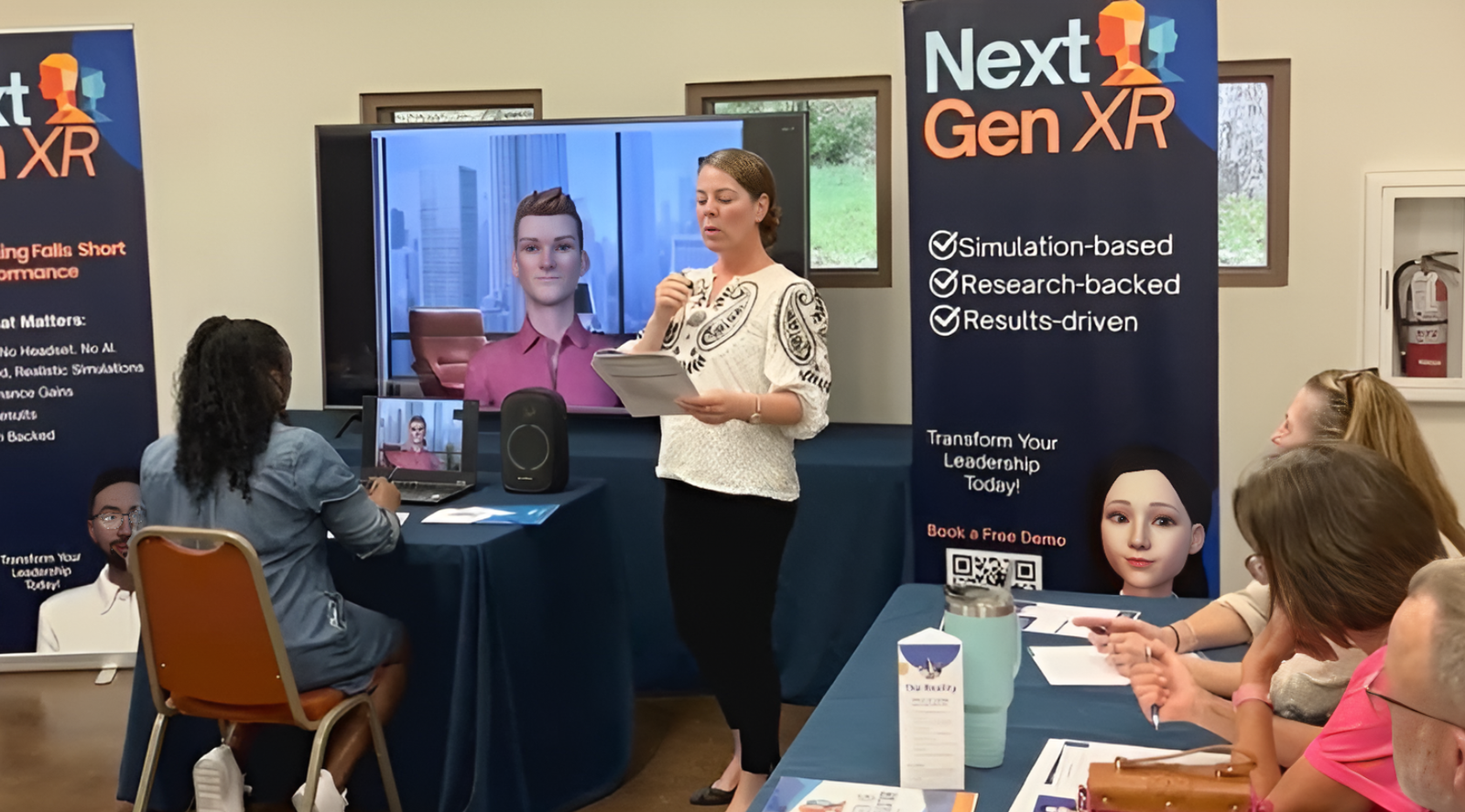Scaling Training Without Sacrificing Quality
The Power of Human-Led XR Simulations
Did you know that more than 70% of organizations struggle to scale their training efforts without compromising quality? This fear often holds companies back from making progress that could enhance their overall effectiveness. Fortunately, with advancements in technology, there is a solution that allows businesses to expand their people training programs while maintaining the personalization that drives results.
Human-led extended reality (XR) training simulations provide an immersive learning environment where trainees can practice essential skills with realistic avatars, all while engaging in meaningful facilitator-led interactions. In this blog post, we will explore how organizations can balance the need for scalability with personalized training experiences, discuss the benefits of headset-free delivery, and examine case studies that highlight the effectiveness of XR simulations, particularly those that are human-led. From addressing the scale vs. personalization dilemma to outlining successful implementations, this guide aims to empower your organization to optimize training without sacrificing quality.
1. Scale vs. Personalization Dilemma
In the fast-paced business world, many companies face the challenge of scaling their training effectively while ensuring the learning experience remains engaging and personalized. Traditionally, training has been a hands-on, one-on-one experience, but as organizations grow, the need for consistency across larger groups becomes critical.
For years, the trade-off was clear:
- Large-scale eLearning programs that check the box but lack depth.
- Or small, instructor-led workshops that deliver impact but don’t scale.
Standardization may drive efficiency, but it often strips away the emotional connection needed for real learning.
To tackle this challenge, organizations must seek innovative solutions that blend scalability with personalization. One such solution is human-led XR simulations. These immersive experiences allow participants to engage in lifelike scenarios with avatars powered by trained actors and guided by trained facilitators. By doing so, organizations can scale their training programs while preserving the nuanced interactions that enhance learning outcomes.
2. Facilitator-Led XR: Best of Both Worlds
Human-led XR simulations combine the benefits of virtual reality with the tactile experience of live interactions. With trained actors controlling realistic avatars, participants practice their human interaction skills, such as giving feedback, resolving conflicts, and assisting customers. This virtuous cycle of experiential learning ensures that while the scale of the training program increases, the quality remains intact.
Facilitators play a critical role in enhancing the training experience by guiding discussions, providing real-time feedback, and creating a safe space for participants to practice critical communication skills. During live sessions, trainees can receive immediate support, allowing them to build their confidence, empathy, and communication abilities.
With the incorporation of engaging avatars, trainees encounter realistic scenarios that mimic real-life interactions. Whether it’s navigating a challenging customer service situation or handling a conflict within a team, XR simulations create meaningful opportunities for practice that lead to long-lasting skill acquisition.
3. Why Headset-Free Matters
A major advantage of human-led XR simulations is that they don’t require headsets, making training more accessible and easier to roll out. Employees can join from laptops or meeting rooms without cumbersome equipment, lowering barriers and speeding adoption. As long as the physical location for the simulation has access to Wi-Fi when using a laptop, then the simulation can be used virtually anywhere. Similarly, they can be executed on a mobile smart phone or
tablet making the accessibility to use the simulation extremely easy to access.
This headset-free model also pairs seamlessly with existing training methods like eLearning or team workshops. By removing tech barriers, organizations make sure every participant feels included while gaining the flexibility to blend learning strategies and boost retention.
4. Case Study Proof
The effectiveness of human-led XR simulations has been shown across public safety, social work, and corporate training. In one case, a public safety organization used simulations to strengthen teamwork and communication during crisis response. Repeated practice helped responders work cohesively under stress, leading to better real-world outcomes.
Social work agencies have applied XR to prepare staff for sensitive conversations and challenging cases. Facilitated sessions with lifelike avatars allowed practice in a safe, coached environment that traditional role-play often lacks.
In corporate settings, simulations boosted skills in sales, customer service, and crisis management. Case studies show faster onboarding, higher engagement, and fewer knowledge gaps when human-led XR was integrated into training programs.
Modern Law Enforcement Training
XR simulations helped entire police units practice de-escalation and decision-making under stress, showing how group delivery reinforces consistency and judgment across teams.
Revolutionizing Skill Development in Higher Education 2025
Graduate programs scaled empathy, interviewing, and critical thinking practice through hybrid simulations, proving experiential training can reach diverse student cohorts at once.
Military Immersive Leadership Simulators
Originally built for preparing officers, these scalable leadership simulations informed corporate training, helping employees practice tough conversations and protect revenue at scale.
5. Group Learning Without Weak Links
If someone asked, “How do you learn best—by doing, by classroom instruction, or by something else?” chances are you’d say by doing. Most adults would, and research confirms it: adults learn best by doing and then by learning from their peers.
XR simulations support both, while also removing the “weak link” problem common in traditional training. In a typical session, uneven skill levels can slow progress or leave some participants behind. XR turns those differences into a collective strength, ensuring every person contributes to the group’s learning.
Just as important, the real learning happens in the facilitated discussion. After each simulation, debriefs give participants a chance to share experiences, compare approaches, and learn from one another’s successes and missteps. This guided reflection builds community, accelerates peer-to-peer learning, and ensures no one is left behind.
The result is a shared experience where everyone practices, reflects, and grows, making teams stronger, more cohesive, and more effective.

So Now What?
Scaling training often brings challenges, but organizations need not sacrifice quality in the process. Research with the U.S. Air Force shows that even groups as large as 400 can learn effectively together, but keeping cohorts smaller increases engagement and individual participation. To expand reach, internal staff can also be trained as XR facilitators, allowing organizations to schedule sessions flexibly and roll out training across teams on their own timelines.
As case studies across public safety, higher education, and corporate sectors show, these human-centered immersive experiences unlock potential, build communication and conflict resolution skills, and create an engaging learning environment that drives real-world results. By combining facilitator expertise with repeatable group sessions, organizations establish a sustainable model for growth, proving that scale and human connection can be partners, not trade-offs.

